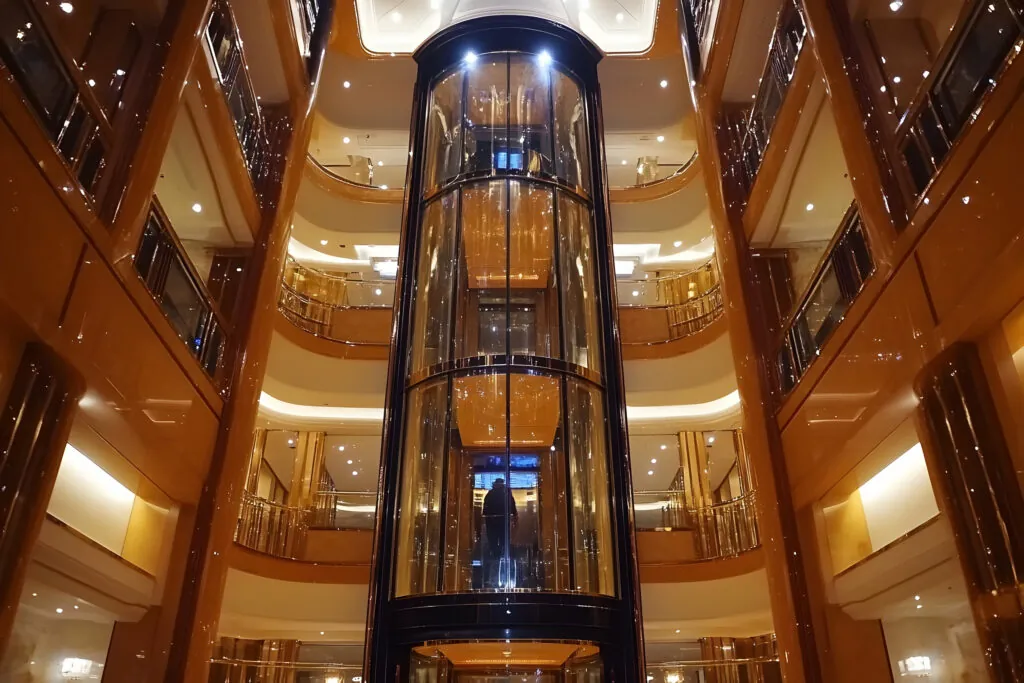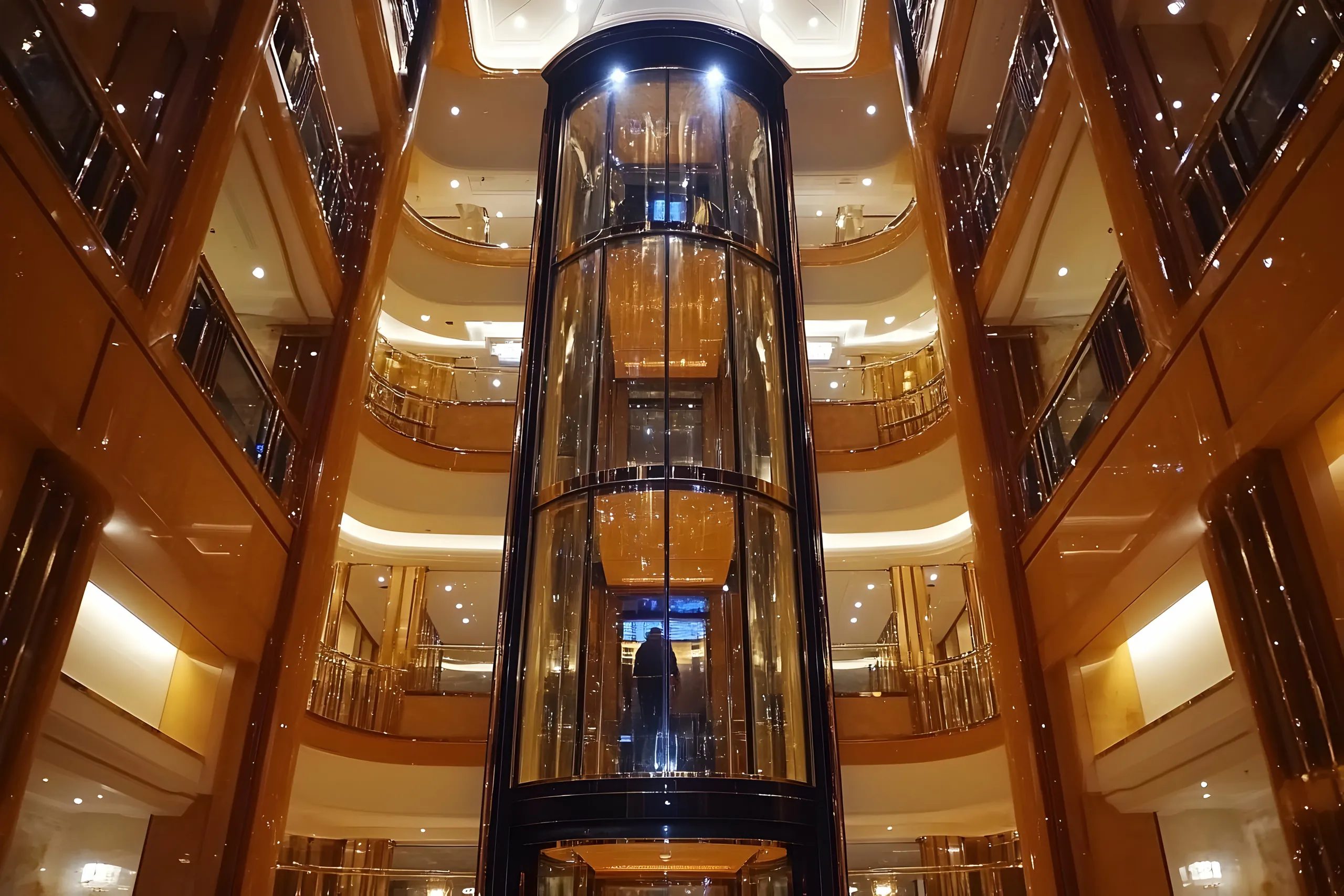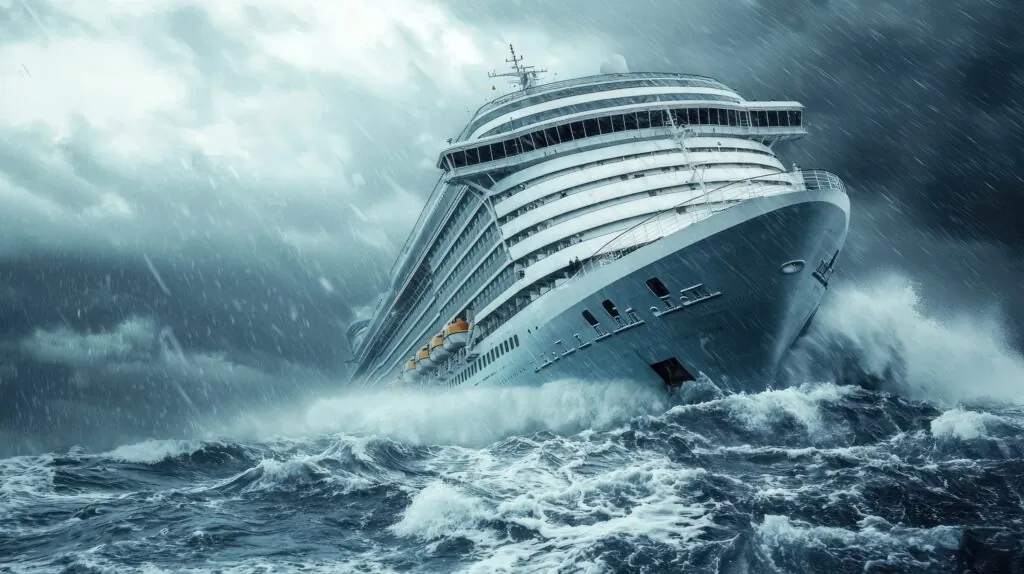Cruise Ship Elevator and Escalator Accidents: Who’s Liable?
Cruise vacations should be a time of rest, relaxation, and exploration — not injury and uncertainty. Unfortunately, elevator and escalator malfunctions aboard cruise ships cause serious, often preventable injuries every year.
At The Cruise Injury Law Firm, we help injured cruise passengers hold cruise lines, third-party contractors, and equipment manufacturers accountable under maritime law. Our firm has extensive experience navigating the legal and technical complexities surrounding mechanical failure cases at sea. If you or someone you love has been injured in an onboard elevator or escalator incident, we’re ready to protect your rights and fight for maximum compensation.

How and Why These Accidents Happen on Cruise Ships
High Usage and Aging Systems
Cruise ships are equipped with multiple elevators and escalators to transport thousands of passengers across as many as 15 decks. These systems operate continuously throughout each voyage. Over time, without proper maintenance, wear and tear leads to mechanical breakdowns and failures that put passengers at risk.
Environmental Stressors Unique to Maritime Vessels
Mechanical systems onboard cruise ships are subjected to harsh conditions not seen in land-based settings. Salt air contributes to corrosion, constant ship movement can affect sensor calibration, and temperature fluctuations can degrade lubricants and materials. These stressors increase the importance of regular inspections and prompt repairs.
Negligent Oversight and Inadequate Maintenance
Many cruise lines delegate maintenance of elevators and escalators to third-party vendors. Unfortunately, this can lead to missed safety checks, incomplete service records, and a lack of accountability. When contractors fail to address warning signs — or when cruise lines ignore or delay reported issues — passengers may suffer serious injuries.
Common Mechanical Failures Leading to Injury
1. Elevator Door Sensor Malfunctions
When door sensors fail, elevator doors may close while a person is entering or exiting, potentially crushing limbs, knocking someone over, or pinning them between doors.
2. Sudden Drops and Stops
Elevators that stop abruptly or fall between decks can cause passengers to fall, lose their balance, or be thrown into walls — leading to spinal injuries, concussions, or broken bones.
3. Escalator Step Malfunctions
Uneven or misaligned steps, missing safety combs, and sudden jolts can cause passengers to trip, fall forward, or have their clothing or shoes caught in moving parts.
4. Electrical or Control Panel Failures
Power surges or faulty control panels can cause elevators or escalators to operate erratically or stop functioning entirely, trapping passengers or creating panic in enclosed spaces.
Types of Injuries Sustained in Elevator and Escalator Incidents
1. Orthopedic and Skeletal Injuries
Many passengers sustain fractures to wrists, hips, ankles, or knees as a result of a fall or sudden impact. Older adults are especially susceptible to hip fractures, which often require surgery and extended recovery.
2. Traumatic Brain Injuries (TBI)
If a passenger falls and hits their head, they may suffer a concussion or more serious brain trauma. These injuries can have long-lasting cognitive, physical, and emotional consequences.
3. Spinal and Neck Injuries
Unexpected jolts or impacts can lead to whiplash, herniated discs, or spinal cord compression — injuries that may require extensive therapy or even surgery.
4. Soft Tissue and Internal Injuries
Pulled muscles, deep bruising, or damage to internal organs can occur from crush injuries or being thrown against the interior walls of the elevator.
5. Psychological Trauma
Elevator and escalator incidents can be terrifying. Victims may experience anxiety, PTSD, or develop phobias of enclosed spaces or heights, especially if trapped or unable to escape.
Legal Responsibility Under Maritime Law
Cruise Line’s Duty of Care
Under maritime law, cruise operators are obligated to provide passengers with reasonably safe conditions aboard their ships. This includes maintaining mechanical systems like elevators and escalators. When a cruise line fails to identify or remedy known issues, or hires unqualified contractors, they may be considered negligent under the law.
Potentially Liable Parties
Responsibility for your injury may not rest with just one party. Depending on the circumstances, liability may fall on:
- The cruise line or vessel operator
- Third-party maintenance providers contracted to service elevators and escalators
- Equipment manufacturers or suppliers, if defective components contributed to the malfunction
- Crew members or staff who failed to respond to complaints or safety alerts
Proving Negligence in Cruise Ship Injury Cases
Our legal team collects maintenance records, witness statements, surveillance footage, safety logs, and expert reports to build a compelling case. We identify safety violations, ignored warnings, and system failures that show the cruise line did not uphold its duty of care.
What Compensation May Be Available to Victims?
1. Medical Expenses
We pursue reimbursement for all past and future medical bills related to the injury — including ER visits, surgeries, hospitalization, physical therapy, medications, and long-term care.
2. Lost Income and Earning Capacity
If your injury prevented you from working or will reduce your ability to earn in the future, we seek compensation for both past lost wages and projected future losses.
3. Pain and Suffering
Physical pain, emotional trauma, and psychological stress can be just as damaging as financial losses. Our firm ensures that your non-economic damages are thoroughly calculated and accounted for in your claim.
4. Disability and Disfigurement
Permanent injuries may entitle you to additional compensation. We fight for clients facing amputations, paralysis, scarring, or any life-altering change to appearance or function.
5. Travel and Out-of-Pocket Costs
Cruise-related injuries often require return travel, transportation to specialists, hotel stays, and more. These expenses can be recovered as part of your claim.
How to File an Injury Claim After a Cruise Ship Elevator or Escalator Accident
Step 1: Report the Incident Onboard
Immediately notify ship security, medical staff, or guest services. Ask to fill out an incident report and request a copy before disembarkation. This documentation will become part of your legal record.
Step 2: Seek Immediate Medical Care
Prompt treatment protects both your health and your legal claim. Be sure to follow up with doctors after your cruise, even if your symptoms seem mild at first.
Step 3: Preserve Evidence
Take photos of the elevator/escalator, your injuries, and the scene of the incident. Document the exact time and location of the accident. Save your cruise ticket, daily itineraries, medical records, and expense receipts.
Step 4: Contact a Maritime Injury Attorney
Most cruise lines require that you file a formal claim within six months and a lawsuit within one year. Missing these deadlines can permanently prevent you from seeking compensation.
At The Cruise Injury Law Firm, we ensure your case is filed correctly, within all deadlines, and supported by strong legal and factual arguments.
Why Choose The Cruise Injury Law Firm?
Unmatched Focus on Cruise Injury Litigation
Our practice is not just personal injury — it’s cruise injury law. We exclusively handle cases involving injuries at sea, giving us a strategic advantage in navigating maritime regulations, cruise line contracts, and international jurisdictions.
Deep Understanding of Maritime Law
Maritime law is unlike any other area of injury law. We understand how forum selection clauses, liability waivers, and federal limitations affect your ability to recover. We know where to file, when to file, and how to win.
Results-Oriented Legal Strategy
Our firm only gets paid if we win. That means we’re fully aligned with your outcome. We’re aggressive in settlement negotiations and prepared to litigate against even the largest cruise companies when necessary.
Personalized, Compassionate Representation
We treat every client like family — not a case number. You’ll receive regular updates, honest advice, and a legal strategy tailored to your unique circumstances.
Frequently Asked Questions About Cruise Ship Elevator and Escalator Injuries
Who is responsible for maintaining elevators and escalators on cruise ships?
Responsibility for maintaining mechanical systems onboard typically falls to the cruise line. However, many cruise lines outsource maintenance and repairs to third-party contractors. In such cases, liability may be shared between the cruise operator and the contractor if the injury was caused by negligence, faulty repairs, or lack of inspection. In some circumstances, even the manufacturer of the elevator or escalator may be held liable if the accident was due to a product defect. Determining who is responsible requires a detailed legal analysis, which is part of what we do at The Cruise Injury Law Firm.
Can I sue a cruise line if I was injured by a malfunctioning elevator or escalator?
Yes, if you were injured due to a malfunction or unsafe condition involving an elevator or escalator, and that malfunction resulted from negligence, you likely have grounds for a lawsuit under maritime law. This includes accidents caused by poor maintenance, lack of repairs, outdated equipment, design defects, or improper oversight. Our legal team can evaluate the details of your case to determine liability and help you take legal action within the proper timeframes.
What if the accident happened in international waters or on a foreign-flagged ship?
Most cruise ships are registered in foreign countries, and many operate in international waters. However, if your ticket or contract specifies a particular jurisdiction for filing claims — such as Miami, Florida — that location will typically govern the case. Maritime injury claims are often handled in federal court under U.S. maritime law, especially if the cruise line operates out of or is headquartered in the United States. Regardless of where your accident occurred, we can help you understand the appropriate venue and jurisdiction for your claim.
How long do I have to file a claim?
Most cruise lines enforce strict deadlines, often outlined in the fine print of your passenger contract. Typically, you must notify the cruise line of your injury within 180 days of the incident, and a formal lawsuit must be filed within one year. These deadlines are much shorter than those found in standard personal injury cases on land, and missing them may result in your claim being permanently barred. That’s why it’s critical to consult an experienced maritime attorney as soon as possible after your injury.
Do I need a maritime lawyer for an elevator or escalator injury at sea?
Yes. Cruise ship injury claims are governed by maritime law, which is a highly specialized area of legal practice. These claims involve unique procedural rules, contractual limitations, international considerations, and aggressive defense strategies from cruise lines and their insurers. A general personal injury attorney may not be familiar with these nuances. At The Cruise Injury Law Firm, we focus exclusively on injuries that occur aboard ships, giving you the legal advantage of deep, specific experience.
Contact The Cruise Injury Law Firm Today
Cruise ship elevator and escalator accidents are traumatic, dangerous, and often preventable. If you or someone close to you has been injured in one of these incidents, time is critical.
Let The Cruise Injury Law Firm evaluate your claim, explain your rights, and help you hold the responsible parties accountable. We’re here to fight for the justice and compensation you deserve.
Contact us today to schedule a free consultation. Consultations are free, and we never charge a fee unless we win.






